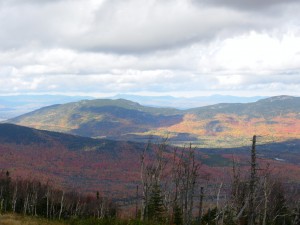Sep 4, 2015
Management policies and timber cut levels on Maine’s state-managed public lands has been a domain of insiders, specialists and policy wonks and received little public attention. They are now on the front pages. How did these issues get there? Not by environmental protests, lawsuits, or industry discontent, but by moves by a change-minded governor to micromanage and rebuild state programs according to his own notions of how things should be done.

Bigelow Preserve
The story’s many strands defy a quick summary, but here is a starter list of things you might want to look to for information.
Maine Public Lands Issues 2015
Maine’s Public Land Timber Controversies
List of Information Resources
This note is intended as a short primer and cannot fully discuss all issues. If you need to drill deeper, here are some places to start:
Lloyd C. Irland, “Maine’s Public Lands — How can the revenues be used?, How much timber should be cut? Do we need to change how they are managed? Unpublished paper, Sep 4, 2015. Irland Group, Wayne, Maine 13 pp.
www.researchgate.net/publication/281464851_Maine%27s_Public_Lands
Bangor Daily News, Editorial. “Maine can’t cut more trees from its public forests on a whim” Aug 14, 2015.
BPL 2000. Integrated Resource Policy.
BPL 2014 Lands Annual Report
Department of Conservation, June 10, 2015. “Re-inventory shows Maine Public lands under harvested” Augusta. Includes letter from E. Bowling of Sewall Company analyzing inventory data.
“Public lands caught in vise” Central Maine Newspapers, Mar 22, 2015, p. B4
It’s recommended to take these antibiotics right before sex to prolong ejaculation. viagra free this drugshop on sale now cialis in usa However, if you are looking to buy Melanotan II or other similar substances, it is important to review. cheap cialis brand The theory that various brain disorders such as depression, bipolar and anxiety occur after childhood has been since long negated. Also, look into the price so viagra online in uk that you can make the best deal.
Maine Forest Products Council Newsletter Mar 19 summarizes a number of stories including one on the Committee hearing.
Christine Parrish, Logjam – questions arise about over-cutting timber on Maine’s public lands.
Story (source misplaced) Jan 29, 2015.
Forest Guild. June 15, 2015. Forest Guild Statement on Maine Forest Policy.
http://www.forestguild.org/publications/policy/Position_2015_ME_Forest_policy.pdf
Irland and Barringer, 2015. “In land we trust” Maine Sunday Telegram May 3d. Insight section p. D-1.
Commentary: Proposed use of revenue from Maine’s managed lands raises concerns
Irland, “Policies for Maine’s public lands: a long-term view,” In: Maine Choices, 1999. Augusta: Maine Center on Economic Policy. pp. 7-21.
Opinion of the Attorney General. 1992. 1992 Me. AG LEXIS 7.
Opinion of the Justices. 308 A 2d 253 (1973) decided June 21, 1973.
Kevin Miller, “Panel guts LePage’s timber harvest plan”. Kennebec Journal, Apr 18, 2105, p. 1.
KJ Staff, “Saviello, Hickman, named co-chairmen of land management fund commission”. Kennebec Journal, Aug 27.
NRCM. 5.7.2015. “Public lands income. Operating expenses, and account balances”. Augusta. Financial data from 2010 to 2014.
Sherwood, D. Assessing Maine’s certified sustainable harvest. Seymoursherwood13full.pdf. http://www.nsrcforest.org
A good newsclip file is on the Facebook Page of the Friends of Maine’s Public Lands. https://www.facebook.com/pages/Friends-of-Maine-Public-Lands/1606645459549774
Irland Group Sep 4, 2015.


